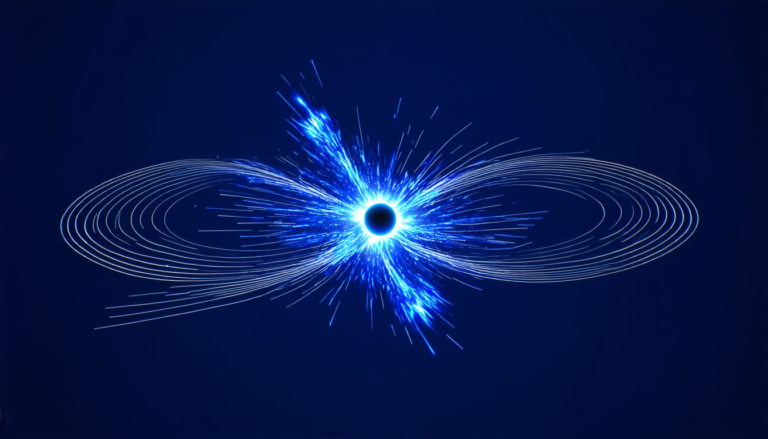Friday 23 May 2025
Astronomers have made a fascinating discovery in the young binary system DF Tau, located about 400 light-years away from Earth. The team observed unusual emission nebulae surrounding the pair of stars, which has shed new light on how these systems form and evolve.
The DF Tau system is a type of classical T Tauri star, a stage in the life cycle of young stars where they are still contracting towards the main sequence. These stars are known for their strong magnetic fields and intense activity, which can lead to the formation of jets and outflows of gas and dust. The new observations have revealed that DF Tau is no exception.
The team detected a ring-shaped nebula around the binary system, but surprisingly, it’s not centered on either star. Instead, it appears to be a complex structure formed by the interaction between the stars’ magnetic fields and their surrounding environment. This finding challenges current theories of how these systems form and suggests that there may be more complexity involved than previously thought.
The astronomers also discovered a jet emanating from the binary system, which is not aligned with the traditional bipolar jet formation seen in many young star systems. Instead, the jet appears to be offset by about 12 degrees from the expected direction. This anomaly could be due to the peculiarities of the magnetic field configuration or the interaction between the stars and their environment.
One of the most intriguing features of the DF Tau system is a blob-like structure located west of the binary pair. The team believes this may be a weakly collimated ejection, similar to what’s seen in other young star systems. However, its exact nature remains unclear, and further study is needed to determine its origin.
The observations were made using a combination of spectroscopy and imaging techniques, which allowed the team to analyze the properties of the emission nebulae and the jet. The results provide valuable insights into the complex processes occurring in young star systems like DF Tau.
The discovery of these unusual features in the DF Tau system has significant implications for our understanding of how stars form and evolve. It highlights the need for continued observation and study of these systems to uncover their secrets. As scientists continue to explore the mysteries of young star formation, they may uncover even more surprises that challenge our current understanding of the universe.
Cite this article: “Mysterious Emotions in Young Binary System DF Tau”, The Science Archive, 2025.
Star Formation, Binary System, Young Stars, Classical T Tauri Star, Magnetic Fields, Emission Nebulae, Jet Formation, Stellar Evolution, Spectroscopy, Imaging Techniques







